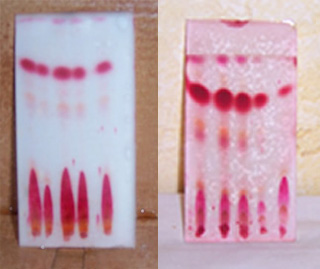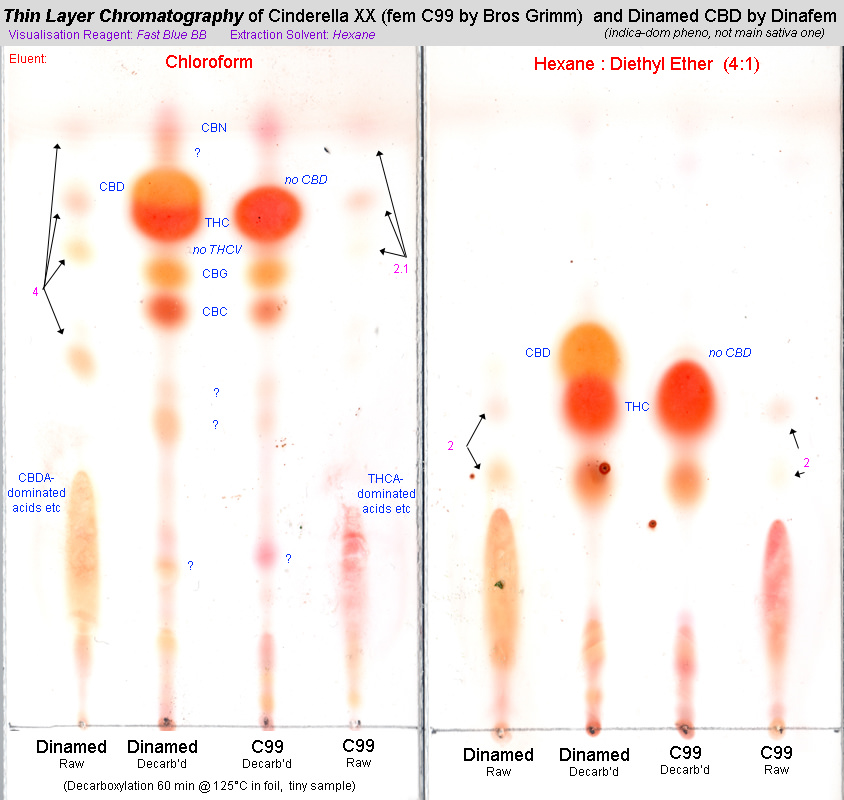Seems to be pretty much the same as any of the other kits, but it looks like their kits come with a Bic lighter lol, not quite sure what that's for.
They also come with those 'size' charts, but again TLC is a
qualitative test - not quantitative. That is, it can tell you "there's no CBD" or "there's a significant amount of CBD" etc, but it can't tell you "there's 5.5% CBD".
Unfortunately they don't seem to provide any MSDS safety sheets so they don't specify which dye they use, but from their images it seems pretty clear that they use Fast Blue B. It seems all the kits use Fast Blue B simply because it transports easier (no dry ice required).
I much prefer Fast Blue BB - it's much more vibrant, results are clearer and easier to interpret, and a slightly better safety profile - BB was developed due to carcinogenic concerns about B.
You CAN simply buy any kit, and then buy some Fast Blue BB to use instead.
For example, here is TLC Lab Supply's sample image, clearly using
Fast Blue B:
Here's a few of my images, using
Fast Blue BB:
View attachment 5346489
This strain has no CBD, but high in THC (the red spots), but also very significant levels of CBG (the orange spots):
View attachment 5346490
The
Fast Blue BB i got is made by Wako (FUJIFILM Wako Pure Chemical Corporation), its 5 gm (which is HEAPS in this context! but they also offered a 1 or 2 gram option, as well as 25 gram etc), it was very affordable - especially considering you only need a tiny amount with each sample, its number thingy is "062-05463", and simply labelled "Fast Blue BB Salt", and
CAS number is "5486-84-0" (that's the important bit). I can't recall which country I ordered it from, but I had no problems getting it sent to Australia (it's not a controlled substance, it's perfectly legal - it's just a dye) and it was packed in dry ice (keep it stored in your freezer and it'll last for years). Here's a google if you want to find some to buy:
https://www.google.com/search?q=buy+"5486-84-0"






